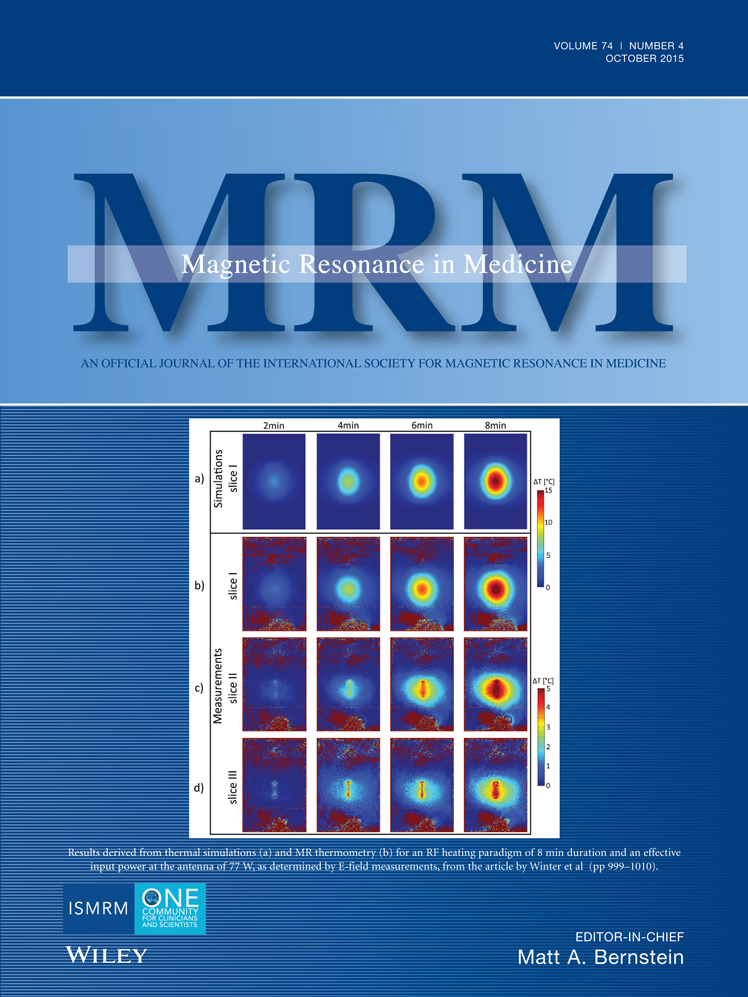High-sensitivity, broadband-decoupled 13C MR spectroscopy in humans at 7T using two-dimensional heteronuclear single-quantum coherence
Abstract
Purpose
Carbon-13 (13C) magnetic resonance spectroscopy (MRS) has an intrinsically low NMR sensitivity that often leads to large acquisition volumes or long scan times. While the use of higher magnetic fields can overcome the sensitivity limitations, high radiofrequency (RF) power deposition associated with proton-decoupling limits the achievable gain. Two-dimensional (2D) heteronuclear single quantum coherence (HSQC) MRS is a method that uses the high chemical specificity of 13C MRS while retaining the high sensitivity of 1H detection. Due to the 2D nature of the method, proton-decoupled 13C MR spectra can be obtained without the use of high-powered decoupling pulses.
Methods
A novel three-dimensional (3D) localized 2D HSQC method based on 3D STEAM localization is presented and implemented at 7T. The low RF power deposition of the method allows TR variation along the indirect dimension which, in combination with controlled aliasing, leads to an acceleration of 11.8 relative to a standard 2D NMR acquisition.
Results
Artifact-free, high-quality and high-sensitivity 2D HSQC spectra were obtained for all subjects in 19 min from a small (9 mL) volume placed in the leg adipose tissue. Complete proton decoupling was achieved along the indirect 13C dimension despite the absence of broadband proton-decoupling pulses. The high chemical specificity along the indirect 13C dimension allowed the detection of 19 unique resonances from which the lipids could be characterized in terms of saturation and omega-6/omega-3 fatty acid ratio.
Conclusion
It has been demonstrated that high-quality 2D HSQC NMR spectra can be acquired from human adipose tissue at 7T. The HSQC method is methodologically simple and robust and is flexible regarding trade-offs between temporal and spectral resolution. 2D HSQC has a strong potential to become a default method in natural-abundance or 13C-enriched studies of human metabolism in vivo. Magn Reson Med 74:903–914, 2015. © 2014 Wiley Periodicals, Inc.




